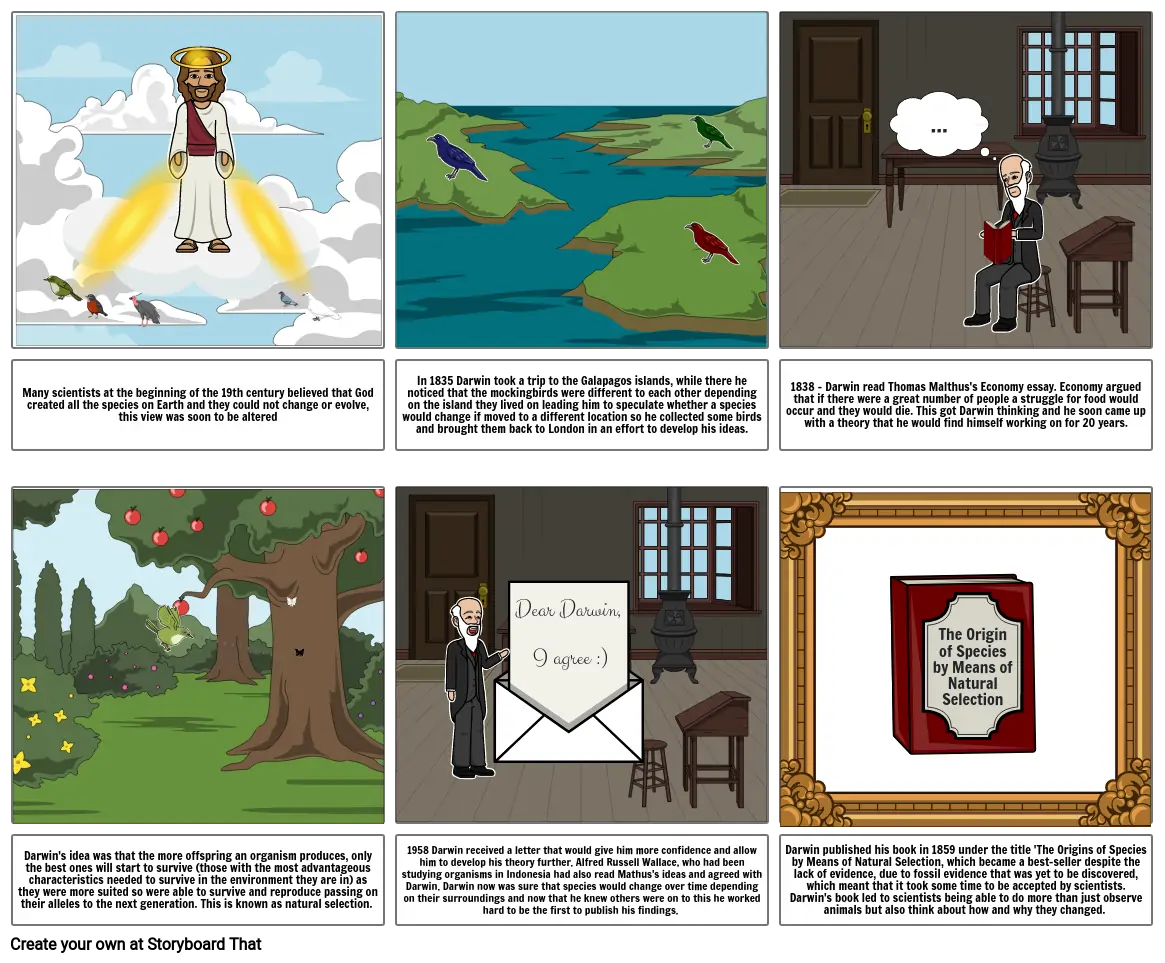The Development of Darwin's Theory

Siužetinės Linijos Tekstas
- ...
- Many scientists at the beginning of the 19th century believed that God created all the species on Earth and they could not change or evolve, this view was soon to be altered
- In 1835 Darwin took a trip to the Galapagos islands, while there he noticed that the mockingbirds were different to each other depending on the island they lived on leading him to speculate whether a species would change if moved to a different location so he collected some birds and brought them back to London in an effort to develop his ideas.
- Dear Darwin, I agree :)
-
- 1838 - Darwin read Thomas Malthus's Economy essay. Economy argued that if there were a great number of people a struggle for food would occur and they would die. This got Darwin thinking and he soon came up with a theory that he would find himself working on for 20 years.
- The Origin of Species by Means of Natural Selection
- Darwin's idea was that the more offspring an organism produces, only the best ones will start to survive (those with the most advantageous characteristics needed to survive in the environment they are in) as they were more suited so were able to survive and reproduce passing on their alleles to the next generation. This is known as natural selection.
- 1958 Darwin received a letter that would give him more confidence and allow him to develop his theory further. Alfred Russell Wallace, who had been studying organisms in Indonesia had also read Mathus's ideas and agreed with Darwin. Darwin now was sure that species would change over time depending on their surroundings and now that he knew others were on to this he worked hard to be the first to publish his findings.
- Darwin published his book in 1859 under the title 'The Origins of Species by Means of Natural Selection, which became a best-seller despite the lack of evidence, due to fossil evidence that was yet to be discovered, which meant that it took some time to be accepted by scientists. Darwin's book led to scientists being able to do more than just observe animals but also think about how and why they changed.
Sukurta daugiau nei 30 milijonų siužetinių lentelių

